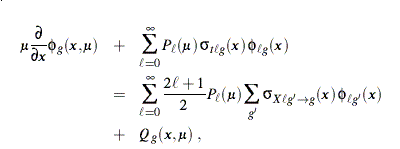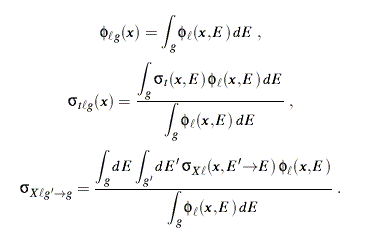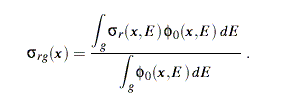The basis for GROUPR is the "multigroup Boltzmann transport equation," which can be written as

where slab geometry has been used for simplicity. The first term describes the spatial transport of neutrons in group g, the second accounts for reactions in group g, the third gives the source into group g from other groups, and the last includes any fixed sources and the source from fission. The flux and cross sections that appear here are defined as follows:

One of the reasons for doing a transport calculation is to obtain various "responses," such heating, production of a radionuclide, or production of helium. The responses can be computed using the multigroup flux together with a multigroup reaction cross section:

It is the mission of GROUPR to compute the cross sections with "g" subscripts, which are often called "multigroup constants." The Boltzmann equation itself is then solved in a separate neutron transport code, such as ANISN or DANT.